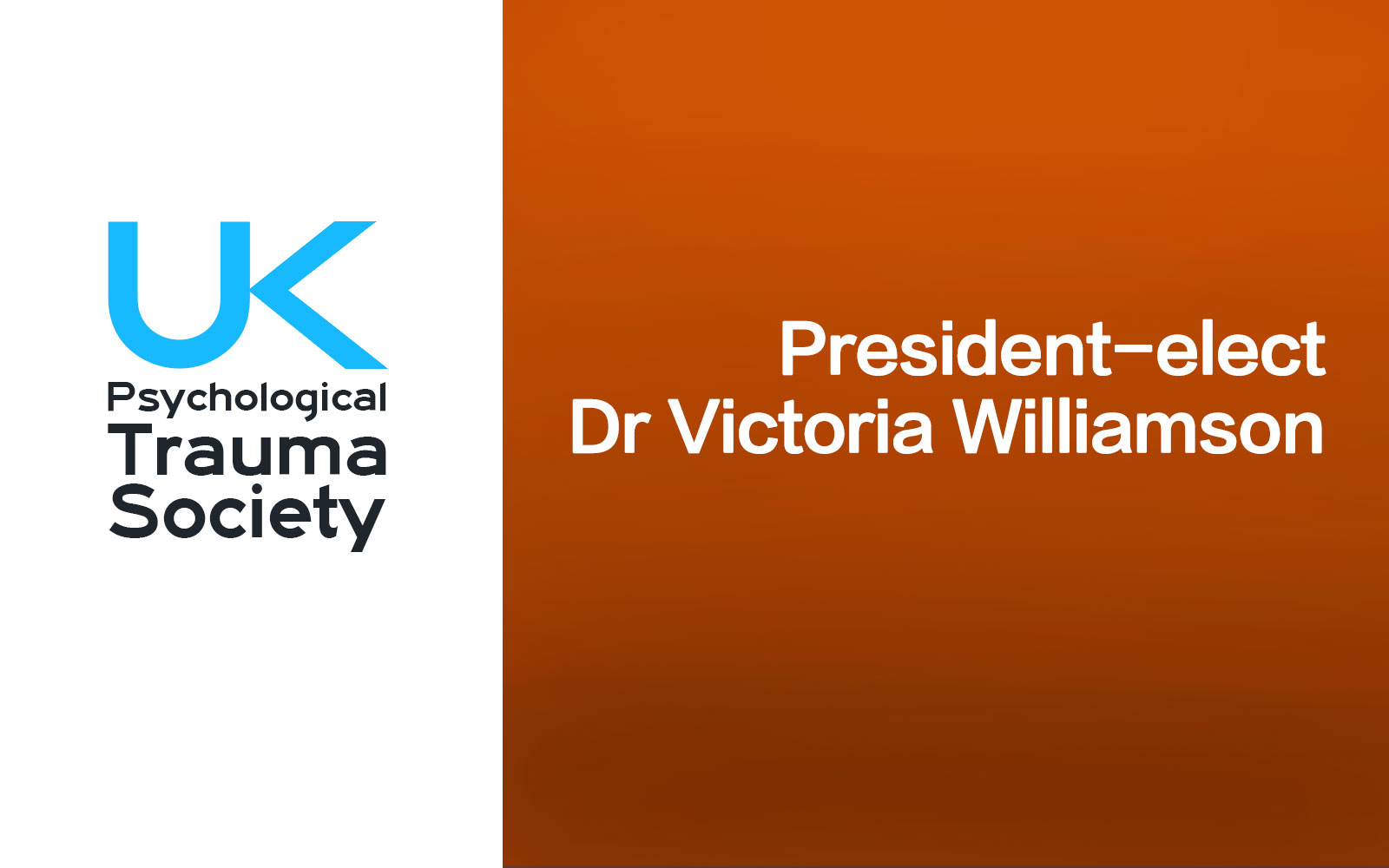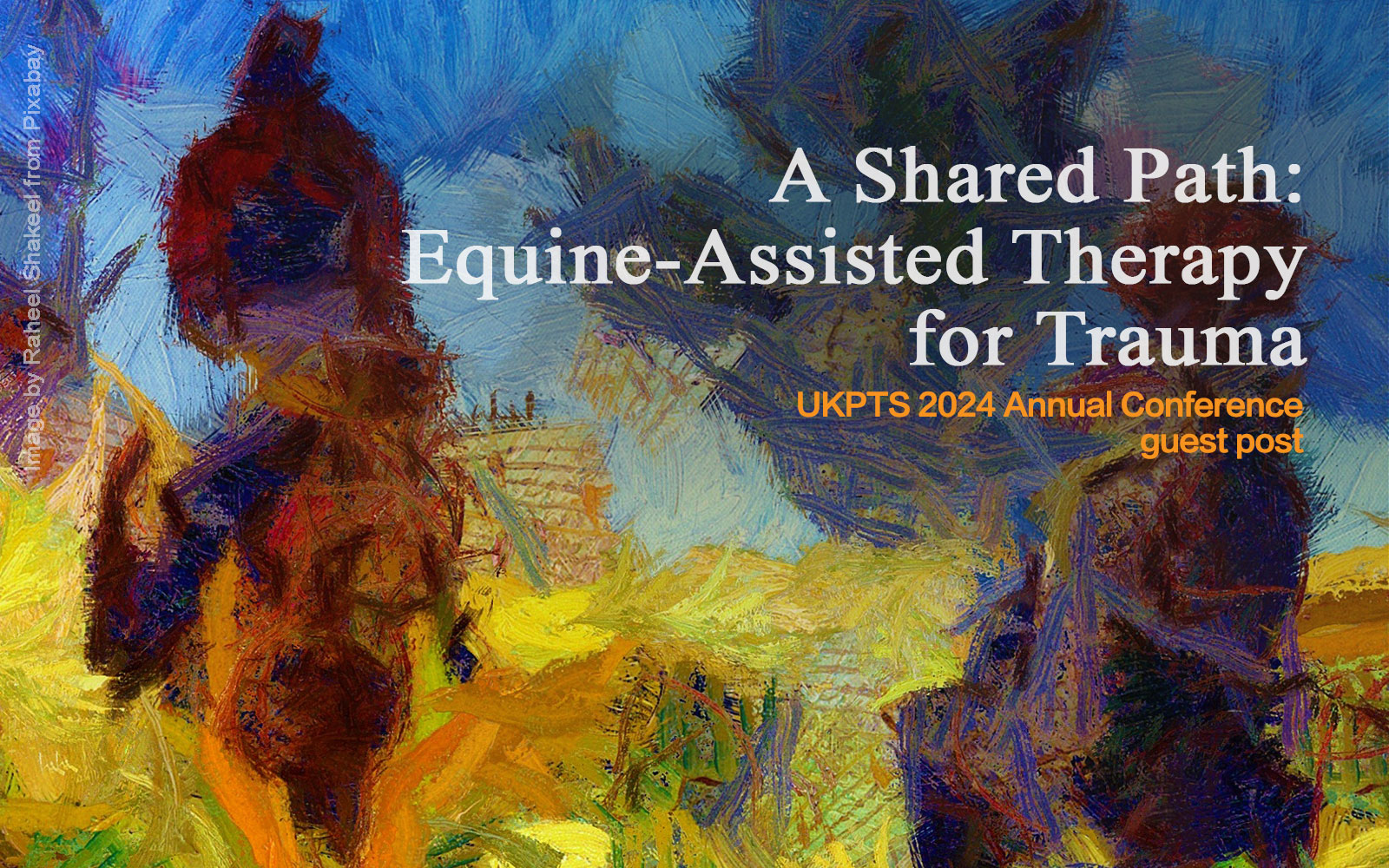Trauma-Related Shame
Perspectives on Trauma-Related Shame
Fran Ryan, trainee Clinical Psychologist at the University of Oxford, reflects on trauma-related shame and how an improved understanding may further an integrated approach to care. This is the second of our invited posts from DClinPsy candidates on the UKPTS 2024 Annual Conference on 19 January 2024 topic of ‘Trauma Care: Towards an Integrated Approach’.

What do you think about when you consider the feeling of shame? Stigma? Guilt? Regret? Judgment? Humiliation? These all came to mind when I asked colleagues what words they associate with shame. Shame is a powerful and pervasive experience and yet is so multi-faceted we struggled to pin down a coherent sense of what it means to experience it.
Shame can drive behaviour, influence values, and impact how and in what ways people approach the process of help-seeking as individuals, family systems, and wider communities – including my own. I grew up in a family with a complex patchwork of lived experiences where it was normal for adults to manage difficulties alone and rarely ask for help, something I had assumed was the norm. Experiences of shame run unspoken through families, individual experiences, and communities, sometimes voiced and often not.
In relation to understanding shame as a reaction to trauma, an exploration of the varying perspectives can help us develop a more integrated understanding of trauma, its consequences, and successfully treating any lasting adverse psychological effects.
The basics of shame
Broadly speaking, shame is often conceptualised as a ‘self-conscious’ emotion; a definition which interweaves notions of powerlessness, devaluation, and feeling outside of the social norm.1 If we experience shame, we might feel unworthy of love or care. For example, we may think of ourselves as being inherently and irrevocably flawed or believe our relationships or social status are under considerable threat.2
Lee & Scragg see shame as a global attack on the self in so much that shame impacts and degrades the fabric of a person’s selfhood on multiple levels.3 This can include a negative self-identity such as ‘I don’t deserve help’, ‘I hate myself’ or ‘I will never be able change’. It can include feelings of extreme disempowerment and poor self-esteem, affective responses that erode a person’s sense of their unique identity and meaning. This can occur alongside tendencies to self-isolate and retreat from others in times of distress as opposed to turn towards others to seek help.4 Gilbert suggests notions of shame may have developed as an evolutionary hangover from an earlier need to prove ourselves as socially acceptable beings.5 Shame helped us monitor social cues, detect threat, and protect ourselves in the face of social rejection in survivalist terms.
It is important to note that shame is a related but different experience to guilt. Both shame and guilt can be biased as manufactured emotional states leading to significant pervasive distress. However, whilst shame can be viewed as a description of significant humiliation, disgrace and dishonour relating to the self and core sense of self-worth, guilt is a description of perceived culpability and blame relating to an action.6
It can also be helpful to consider the interplay between shame and stigma – terms often used interchangeably in our thinking and literature. The word stigma is borrowed from the Latin stigmata which indicates a visual or physical mark of disgrace.7 Our common and present understanding of stigma, as such, relates to the potential for someone to be discredited or experience social devaluation. Scrambler suggests shame could be the ‘fear of encountering enacted stigma’.8 This is especially important when considering the effect of certain diagnoses that may themselves be related to traumatic experiences, that remain highly stigmatised both inside and outside of care environments.
Shame is a global attack on the self.
– Lee & Scragg (2001)
What is trauma-related shame?
Trauma-related shame is rooted in how a person responds to a traumatic event or series of traumatic experiences. We can think about trauma-related shame in internal terms (‘about me’), such as thoughts of ‘I should have defended myself better’ or ‘I deserved this’ or external terms (‘about others’) such as ‘others will judge me, if they know what happened’ or ‘no one will believe me if tell them’. Trauma-related shame is thought to have an eroding effect on the ‘psychological integrity’ of survivors.9
People can experience trauma-related shame inside and outside of the therapy room. However, we often lack a clear consensus on how to best understand and respond when we observe this phenomenon in a therapeutic context. Traditionally, fear has been thought about as being the central emotion in PTSD.10 Significantly, there is a growing evidence base that suggests trauma-related shame is also implicated in PTSD with recent research suggesting that shame can predict symptom severity in PTSD.11 However, the precise mechanisms of the relationship and potential bidirectionally between shame and PTSD and other post-traumatic sequelae is still subject to investigation.3,12
It also worth taking a moment to consider a systemic perspective on how cultural, social and political milieus can also contribute to the internalisation of shame states and attitudes towards survivors. For example, I wonder about the impact of a survivor being asked ‘what were you wearing?’ in cases of rape or sexual assault or how dissecting and cross-examining past sexual histories or alcohol-consumption in courtrooms and across the media may impact on a survivor’s sense of self and legitimacy. How does rhetoric around ‘illegal’ migration impact upon narratives of trauma, displacement, racism, asylum-seeking, and pain?
Trauma-related shame is thought to have an eroding effect on the ‘psychological integrity’ survivors.
– Harman & Lee (2010)
Why might some people experience trauma-related shame?
Applying a longitudinal lens may help us to take a perspective on why some adults are more prone to experiencing debilitating and chronic shame following trauma. This also relates to our theoretical understanding about why some people may be more vulnerable to developing PTSD. Lee & Scragg put forward a schematic model for understanding trauma-related shame in PTSD that draws on our earliest attachment experiences.3 We know our early experiences of receiving care impacts the way we see the world, how we view others, and how we see ourselves – these experiences are organised into schemata (akin to internal templates) that inform our expectations of the world that can be implicit or explicit.
All children need parents who are warm, caring, and attuned enough to their needs to develop a secure attachment and understanding of the world as being generally safe and positive. However, if children’s experience of early caregiving includes emotionally or physically neglectful experiences or abuse can give rise to different series of schemas or implicit perspectives that can remain dormant into adulthood. Experiencing something as overwhelming as trauma can give rise to these shame-related schemas (such as ‘other people will not help me if I ask for support’) that may maintain trauma-related shame in the aftermath of a traumatic incident. A person’s internal shame schemas might mirror the response of others (for example, the question: ‘what were you wearing?’ and associated thoughts ‘it was my fault’) or they might contrast a person’s expectations (e.g., ‘you are no way to blame, how can I help?’).
A bidirectional relationship may exist between psychological distress and trauma-related shame.
– Timblin & Hassija (2023)
The impact: clinical implications, access and potential barriers
In practice, we know people with higher levels of trauma-related shame can delay seeking help.2 The media often features stories of survivors who have experienced trauma where years have elapsed before they feel safe or able to disclose. If you feel as though you do not deserve support or that people will judge you harshly or even reject you if you do reach out, it follows that you may not be able to imagine the potential benefits of disclosure (such as access to trauma support or resources). Even if you do understand the benefits, the risk-cost-benefit analysis may still land on silence as the safest option. Some research suggests shame can bias how survivors may perceive the value of disclosure following sexual or physical assaults.13 As practitioners, we know there is not always a case to go straight to re-processing traumatic memories or dive into hotspots and there may be value in stabilisation and grounding. However, in practice we also understand the need for disclosure; an implicit prerequisite for accessing services – especially in the NHS, where we can often ask adult survivors to disclose to a certain extent (or at least in part label or acknowledge difficulties) multiple times before therapeutic work begins – at the point of initial referral and screening, during an assessment & sometimes again at the beginning of therapy.
Even survivors who access support can be negatively influenced by experiences of trauma-related shame. Trauma-related shame can make it difficult for people to remain within what is commonly conceptualised as their ‘window of tolerance’.14 Siegal’s window of tolerance outlines the ideal state of emotional regulation that allows someone to think clearly, access feelings and memories, and engage with other people. In therapy, this looks like a client who can experience emotions while expressing difficult experiences without tipping into feeling overwhelmed or feeling nothing at all. However, when we’re stressed or feel under threat, thinking clearly can be much harder. Experiencing trauma can shrink someone’s ability to stay grounded and connected within their window of tolerance.9 Being outside of your window of tolerance can physiologically impact areas of the brain associated with emotion regulation and logical thinking. Instead, defence mechanisms may be more easily activated. Some of these responses may include excessive compliance, low-eye contact, intellectualisation, or an extended discussion about unrelated topics to manage or minimise uncomfortable feelings of shame. People experiencing shame-based responses may miss or cancel sessions or even drop out of treatment prematurely.15 One study found non-response rates to trauma treatment were predicted by lower perseverance, reduced ability to express feelings, and self-blame.16 Research has also suggested adults experiencing elevated shame responses may show heightened self-criticism when re-evaluating traumatic memories which may increase feelings of shame.17
Trauma-informed care involves considering what happened to a person: how they experience themselves, the world, and others through the lens of their own lived experiences in a psychologically safe and supportive way. I believe, intrinsic to this is building our awareness of trauma-related shame and developing a sensitive and collective understanding of how shame can present and interact across the whole timeline and processes of therapy, service access and engagement, as well as how we build and sustain therapeutic alliances. Indeed, a greater and more integrated understanding of shame may also prompt us to also examine how our own relationships with colleagues, teams and services in the current social, political, and cultural milieu.
Fran Ryan is currently a trainee Clinical Psychologist at the University of Oxford. She is interested in early intervention in children and young people and is currently researching the relationship between trauma-related shame and childhood memories of warmth and safeness and self-compassion in CPTSD.
Click for tickets and more details of the UKPTS 2024 Annual Conference, ‘Trauma Care: Towards an Integrated Approach’.
The one-day conference will take place on 19 January 2024 at Wolfson College, Oxford will feature speakers on a range of topics including psychedelics, resilience, functional neurological disorders and more.
References
- Tangney, J. P & Dearing, R. L. Shame and Guilt. (2002).
- Dolezal L. Shame anxiety, stigma and clinical encounters. J Eval Clin Pract. 28(5), 854-860. (2022).
- Lee, D & Scragg, P. The role of shame and guilt in traumatic events: A clinical model of shame-based and guilt-based PTSD. Br J Med Psychol. 74(4), 451-66 (2001).
- DeCou, C. Lynch, S. M. Weber, S., Richner, D. Mozafari, A. Huggins, H. & Perschon, B. On the Association Between Trauma-Related Shame and Symptoms of Psychopathology: A Meta-Analysis. Trauma, Violence & Abuse. 24(3), 1191-1201 (2023).
- Gilbert, P. Evolution, Social Roles, and the Differences in Shame and Guilt. Social Research. 70(4), 1205-1230 (2003).
- Wilson, J. P. Drozdek, B. & Turkovic, S. Post Traumatic Shame & Guilt. Trauma, Violence & Abuse. 7(2), 122-141 (2006).
- Vanyukov, M. M. Stigmata that are desired: contradictions in addiction. Addiction Research & Theory. (advance), 1-10 (2023).
- Scrambler, G. Re-framing Stigma: Felt and Enacted Stigma and Challenges to the Sociology of Chronic and Disabling Conditions. Soc Theory Health 2, 29–46 (2004).
- Harman, R. & Lee, D. The Role of Shame and Self-Critical Thinking in the Development and Maintenance of Current Threat in Post-Traumatic Stress Disorder. Clin Psychol Psychother. 17, 13-24 (2010).
- Seah, R. Dwyer, K. & Berle, D. Was it me? The Role of Attributions and Shame in Post-Traumatic Stress Disorder (PTSD): A Systematic Review. Trends in Psychology. 18(3), 675-687 (2023).
- Matloub, J. Xiaonan, Z. Grau, P. P. & Wetterneck, C. T. Does Change in Trauma-Related Shame Predict Change in PTSD Symptomatology? Psychol Trauma. 1-12 (2023).
- Øktedalen, T. Hagtvet, K. A. Hoffart, A.Langkaas, T. F. & Smucker, M. The Trauma Related Shame Inventory: Measuring Trauma-Related Shame Among Patients with PTSD. J Psychopathy and Behav Ass. 36(4), 600-615 (2014).
- Timblin, H. & Hassija, C. M. How Will I Be Perceived: The Role of Trauma- Related Shame in the Relationship Between Psychological Distress and Expectations of Disclosure Among Survivors of Sexual Victimization. J Interpers Violence. 38(7-8), 5805-5823 (2023).
- National Institute for the Clinical Application of Behavioural Science. How to Help Your Clients Understand Their Window of Tolerance. (2019)
- Courtois, C. A. Complex Trauma, Complex Reactions: Assessment and Treatment. Psychol Trauma. 1, 86-100 (2008).
- Brady, F. Warnock-Parkes, E., Barker, C., & Ehlers, A. Early in-session predictors of response to trauma-focused cognitive therapy for posttraumatic stress disorder. Behav Res Ther. 75, 40-47 (2015).
- Bowyer, L. Wallis, J. & Lee, D. Developing a Compassionate Mind to Enhance Trauma-Focused CBT with an Adolescent Female: A Case Study. Behav Cogn Psychother. 42, 248-254 (2014).



